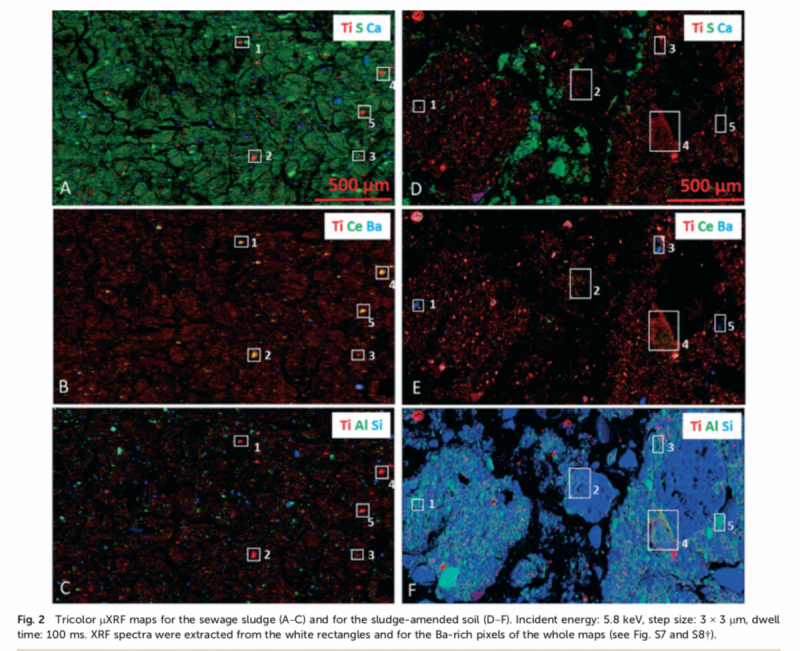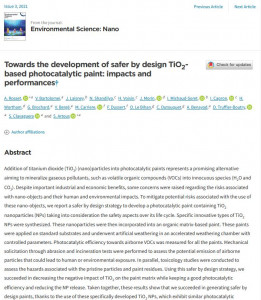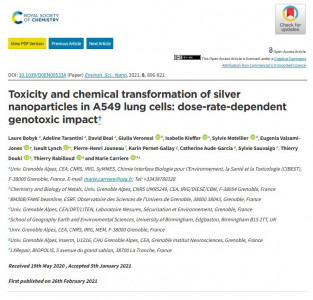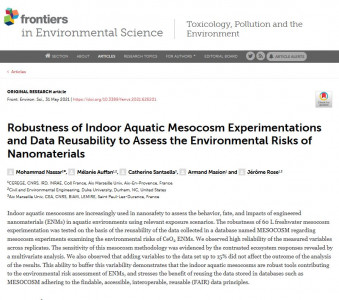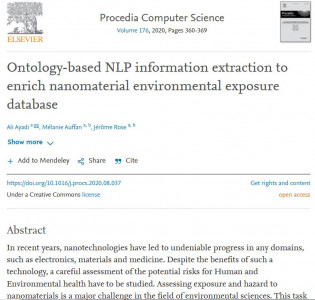New article by Ana Pradas del Real, Castillo-Michel, H., Kaegi, R., Larue, C., de Nolf, W., Reyes-Herrera, J., Tucoulou, R., Findling, N., Salas-Colera, E., Sarret, G. on "Searching for relevant criteria to distinguish natural vs.anthropogenic TiO2 nanoparticles in soils" in Environmental Science :Nano
Abstract :
Nanosized TiO2 is one of the most produced nanomaterials. Agricultural soils are a major compartment of accumulation of TiO2-NPs after release from consumer products into the sewer system, due to the use of sewage sludge as a soil amendment. TiO2 is naturally present in soils, and distinguishing between anthropo- genic and natural TiO2 in soils is thus important to assess the risks associated with the increased use of nano-TiO2. Methods to distinguish these materials in complex matrices such as soils are currently lacking. The purpose of this study was, therefore, to search for characteristic physical and chemical properties of nat- ural and engineered nano-TiO2, based on a combination of bulk, micro and nanofocused X-ray fluorescence and X-ray absorption spectroscopy, transmission electron microscopy, X-ray diffraction and chemical analy- ses. Digested sewage sludge, agricultural soil and sludge-amended soil were studied by these techniques. The particle size distribution was not a relevant criterion since the sludge and the sludge-amended soil contained a variety of nanometer- and micrometer sized Ti-containing particles. Both the sludge and the soil contained a mixture of rutile and anatase, with a minor proportion of amorphous TiO2. In the sludge, there was no trend relating particle size and Ti mineralogy. The morphology of the TiO2 particles proved to be dif- ferent in the two matrices, with smooth faceted particles in the sludge and rough irregular ones in the soil. In addition, natural TiO2 particles were included in micro and macroaggregates of the soil and formed intricate assemblages with minerals and organic compounds. In the sludge, TiO2 formed homo and heteroaggregates of simpler structure, richer in organic matter. Thus, the study of the morphology of TiO2 particles and their status in unperturbed mineral–organic assemblages may provide some insights into their origin. The observed differences may attenuate over time, due to the incorporation of the sludge material within the soil structure.






